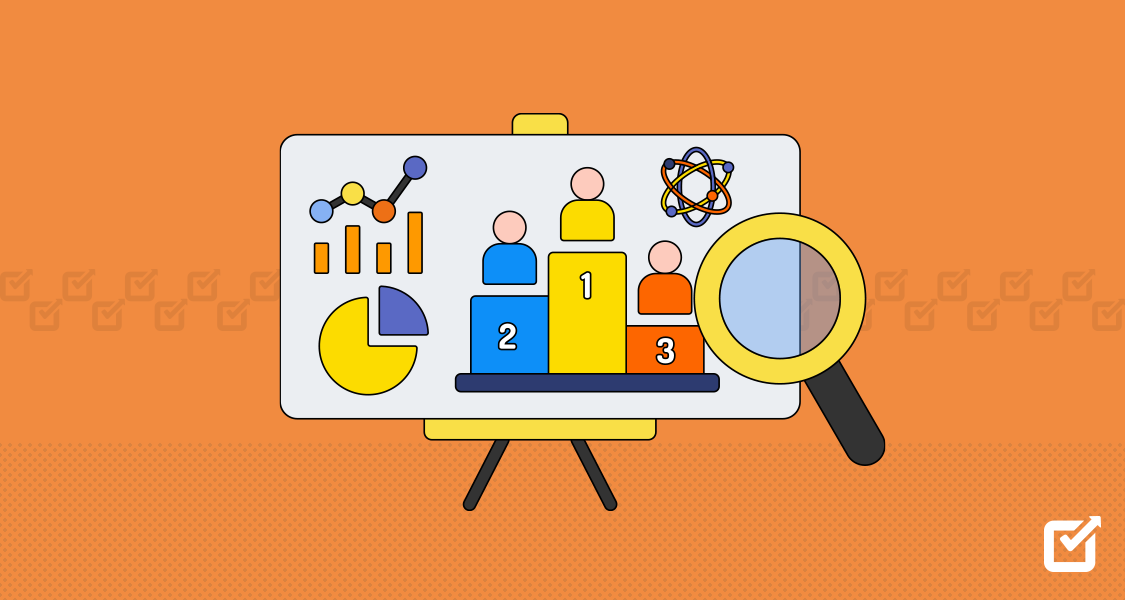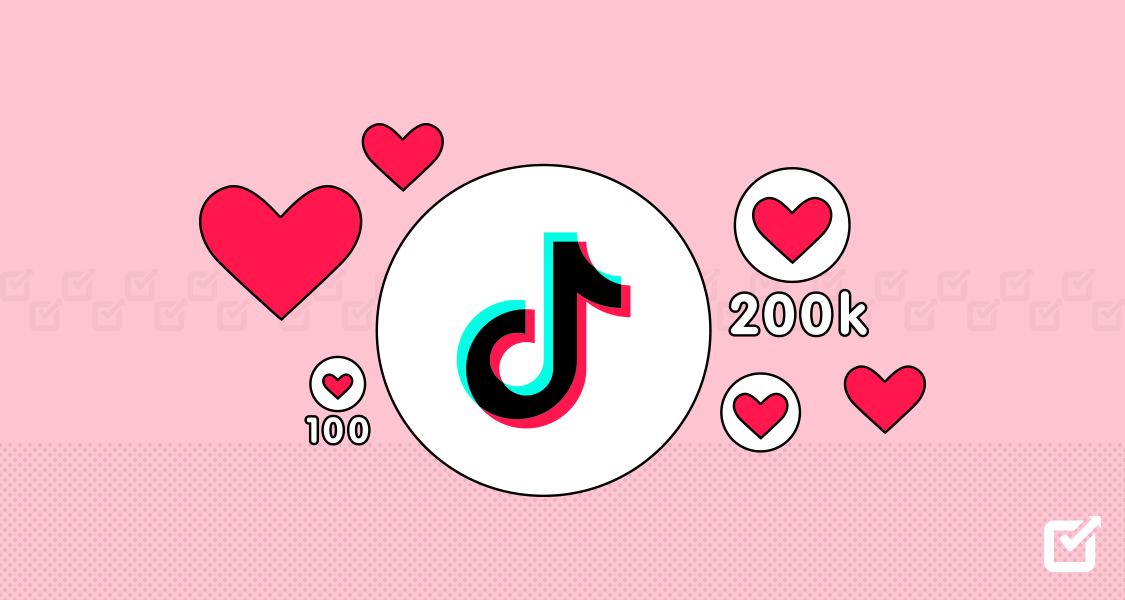Social media competitor analysis is crucial for understanding what your competitors are doing well and where they fall short.
It can inform your social media strategy and help you create content that resonates more with your target audience.
As a result, you can share posts that better connect with your audience, boost engagement, and increase your online presence.
In this guide, we’ll explain the importance of a social media competitor analysis, provide tools for use, and explain how to interpret the results.
You’ll learn how to gather important data and use it to refine your social media scheduling.
Let’s dive in.
What Is a Social Media Competitor Analysis?
Social media competitor analysis involves carefully examining and tracking your competitors’ social media activities to gain useful insights for your own strategy.
This involves looking at various factors, such as the types of content they post, how much engagement they receive, who their audience is, how often they post, and their overall presence on social media.
Tired of Wasting Time Planning on Social Media?
Plan, schedule, and analyze your posts in minutes with Social Champ. Get started NOW and see results faster!
Key Aspects of Social Media Competitor Analysis
Ready to analyze the competition?
Here’s what you need to know.
This section will elaborate on the key aspects of social media competitor analysis.
With these tips, you can dissect your competitor’s strategies and find your chance to outshine them.
- Content Types:
Look at what kinds of content your competitors are sharing—whether it’s videos, images, stories, or articles.Identify which types of posts get the most interaction. This can help you decide what kind of content to create for your own audience. - Engagement Rates:
Monitor how often people like, comment, share, and click on your competitors’ posts. By understanding what drives high engagement, you can adjust your own content to better connect with your audience. - Audience Demographics:
Study the demographics of your competitors’ followers, such as their age, gender, location, and interests. This information can help you see if you’re targeting the right audience and find new groups to engage. - Posting Frequency:
Pay attention to how often your competitors post on different social media platforms. Knowing their posting schedules can help you plan your own posting times to improve visibility and engagement. - Overall Social Media Presence:
Evaluate your competitors’ overall presence across social media channels. This includes looking at their follower growth, how consistent their brand message is, and how they use different platforms to reach varied audiences.
Related Article: 15+ Competitor Analysis Tools to Spy on Your Competition in 2025
Why Is a Social Media Competitor Analysis Important?
Conducting a social media competitor analysis is vital for enhancing your strategy and staying ahead of the competition.
Here are some key reasons why it’s important:
You Can Identify Market Trends
Analyzing your competitors’ social media activities helps you spot emerging trends within your industry.
This allows you to adjust your content strategy to stay relevant and appealing to your target audience.
For example, if you notice that video content is becoming more popular among your competitors and their followers, you might decide to incorporate more videos into your own content plan.
Similarly, if a new type of post format, like interactive polls or live streams, starts gaining traction, adopting these trends early can help keep your audience engaged and attract new followers.
You Can Benchmark Performance
Competitor analysis allows you to benchmark your social media performance against others in your industry.
You can see how well your efforts are paying off by comparing metrics, such as engagement rates, follower growth, and content reach.
For instance, if your competitors have higher engagement rates, it might indicate that their content resonates better with the audience.
This insight can prompt you to reassess and enhance your content quality.
Similarly, by tracking follower growth, you can understand if your strategies effectively attract new followers or if adjustments are needed to boost your growth rate.
Benchmarking helps you recognize both your strong points and areas that need improvement.
You Can Uncover Opportunities
Understanding your competitors’ strengths and weaknesses can reveal gaps in the market that your brand can exploit.
For instance, if you observe that your competitors are not covering a specific content niche—like detailed how-to guides or user-generated content—you can step in and fill that void.
Additionally, if your competitors are underutilizing a particular platform where your target audience is active, such as Instagram or LinkedIn, you can focus your efforts there to gain an edge.
These opportunities allow you to differentiate your brand, attract a wider audience, and potentially capture the market share that your competitors are missing out on.
You Can Refine Your Content Strategy
By observing what types of content resonate with your competitors’ audiences, you can refine your own content strategy.
This might involve adjusting the format, tone, timing, and topics of your posts to better engage your audience.
You can tweak:
- Format: If you notice that your competitors’ video content gets high engagement, consider incorporating more videos into your own strategy. Conversely, if infographics are particularly effective, you might want to create more visual content.
- Tone: Pay attention to the tone of successful posts—whether they are formal, casual, humorous, or inspirational. Adopting a similar tone can help your content connect more effectively with your audience.
- Timing: Analyze the times when competitors post their most engaging content. Adjusting your posting schedule to align with these peak engagement times can improve the visibility and interaction of your posts.
- Topics: Observe which topics generate the most buzz among your competitors’ followers. Use this information to guide your content creation, ensuring you cover subjects your audience finds interesting and valuable.
Learning from your competitors’ successes and mistakes lets you create more compelling content that better meets your audience’s needs and preferences.
Featured Article: Threads vs. X Everything You Need to Know About It
You Can Improve Customer Engagement
Analyzing how competitors interact with their followers can provide insights into effective engagement strategies.
You can learn how to build stronger relationships with your own audience by adopting successful tactics used by your competitors.
For instance, you can improve on:
- Personalized Responses: If your competitors are getting good engagement by responding to comments with personalized messages, you might try integrating this approach into your own strategy.
- Interactive Content: Notice if competitors run interactive sessions like Q&As, polls, or live streams that receive high engagement. Implementing similar tactics can make your audience feel more involved and valued.
- Community Building: Look at how competitors foster community around their brand. Whether through user-generated content campaigns or dedicated groups, adopting these methods can enhance your brand’s connection with its followers.
Key Metrics for Social Media Competitor Analysis
To truly understand what’s working for your competitors, you need a data-driven approach.
Here’s what you need to track:
Audience & Engagement
- Follower Growth: See how quickly your competitors are building their audience.
- Demographics: Understand who they’re reaching (age, location, interests).
- Engagement Rate: Analyze how well their content resonates (likes, comments, shares).
- Brand Mentions: Track how often their brand is organically mentioned in conversations.
Content Performance
- Post Frequency: Identify how often they post and on which days/times.
- Content Types: Discover what content formats resonate best (images, videos, text)
- Top Performing Posts: Analyze which posts generate the most engagement.
- Hashtags: See which hashtags they use and how effectively they drive reach
How to Implement Your Social Media Competitor Analysis Data
Let’s say you’ve already conducted a thorough social media competitor analysis.
Now, how do you sift through data on the competitor’s content strategy, audience engagement, and platform dominance?
Here comes the crucial step: transforming this raw data into actionable insights that elevate your own social media presence.
In this section, we’ll teach you ways to implement your competitor analysis data.
Identify Strengths, Weaknesses, Opportunities, and Threats (SWOT) Analysis
Your competitor analysis data provides the foundation for a SWOT analysis.
Here’s how to leverage it:
- Strengths: Analyze which content performs well for your competitors. What kind of posts resonate with their audience?
Do they excel at specific content formats (videos, infographics, or others)? Identify areas where your competitors shine and see if you can incorporate similar strategies while maintaining your brand voice. - Weaknesses: Look for gaps in your competitors’ strategies. Are they neglecting a particular social media platform where your target audience is active?
Do their posts lack engagement, suggesting room for improvement in content type or tone? Capitalize on these weaknesses by establishing a strong presence on underutilized platforms or tailoring your content for better engagement. - Opportunities: Use competitor data to identify trends and untapped potential. Are there emerging social media platforms gaining traction in your industry?
Is there a specific content niche that your competitors haven’t fully explored? Seize these opportunities to differentiate yourself and reach new audiences. - Threats: Anticipate potential roadblocks by analyzing your competitors’ strengths. Are they attracting a large, loyal following?
Do they consistently outshine you in terms of content quality or audience engagement? Develop strategies to mitigate these threats by focusing on your unique value proposition and continuously improving your social media efforts.
Content Strategy Revamp
Armed with insights from your competitor analysis, it’s time to refine your content strategy.
Here’s what you can focus on:
- Content Mix: Analyze which content types resonate best with your competitors’ audience. Do informative blog posts garner high shares?
Perhaps user-generated content (UGC) drives significant engagement. Use this data to inform your content mix, ensuring a healthy balance of formats that cater to your audience’s preferences. - Content Calendar: Competitor data can help you identify optimal posting times and frequencies. Look for patterns in their posting schedules.
Do they post daily or leverage strategic bursts of activity? Analyze which approach aligns with their audience engagement. Leverage this knowledge to create a content calendar that maximizes visibility and engagement. - Content Quality: Benchmark your content quality against those of your competitors. Are their visuals high-quality and engaging?
Is their writing clear, concise, and informative? Strive to create content that surpasses competitor standards, offering unique value and a compelling voice.
Audience Insights
Understanding your competitors’ audience is key to building your own.
Here’s how your analysis data can help:
- Identify Your Ideal Audience: Analyze who your competitors are targeting on social media. Look at demographics, interests, and online behavior patterns.
This helps you refine your own target audience and tailor your social media presence accordingly. - Engage with Competitor Audiences: Use social listening tools to track conversations surrounding your competitors’ brands. Identify topics, pain points, and questions their audience raises.
Use this knowledge to create content that directly addresses these needs and attracts their audience to your brand.
- A snapshot of social listening by Social Champ
- Expand Your Reach: Look at the social media platforms your competitors aren’t utilizing effectively. This might be an opportunity for you to establish a strong presence and capture a new segment of your target audience.
Work on Engagement
Competitor analysis can reveal valuable secrets about audience engagement strategies.
- Analyze Engagement Tactics: See what kind of interactions your competitors’ posts generate. Do they encourage comments through open-ended questions?
Do they spark discussions with polls or interactive elements? Adapt these tactics to your own content and encourage a two-way conversation with your audience. - Respond Promptly: Analyze how quickly your competitors respond to comments and messages. Aim to surpass their responsiveness by establishing a clear communication strategy and engaging with your audience in a timely manner.
- Run Social Media Contests: Social media contests are a great way to boost engagement. See if your competitors run contests frequently and what types of prizes they offer.
Adapt their strategies to run engaging contests, incentivizing audience participation and brand awareness.
Invest in Social Media Management Tools
Taking your social media strategy to the next level often involves leveraging automation tools.
Here’s where social media management tools like Social Champ come into play.
Social Champ acts as a comprehensive hub for all your social media needs.
It empowers you to refine your strategy based on competitor insights.
You can schedule posts for optimal reach, analyze performance with analytics, and manage audience engagement from a central social inbox.
The best part? Social Champ is also launching a social media competitor analysis tool, which can help you analyze your competitions performance from the same platform!
Need an All-In-One Social Media Solution?
Schedule winning posts, listen to key conversations, analyze results, manage your social inbox, and even spy on the competition – all within one platform!
In Conclusion
Social media competitor analysis isn’t just about keeping an eye on your rivals.
It’s a strategic tool to unlock valuable insights, identify opportunities, and refine your approach.
By implementing the data you gather, you can create content that resonates with your audience, foster deeper engagement, and ultimately achieve social media dominance.
Remember, the key lies in transforming this data into actionable steps.











